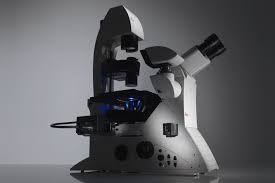
Explore Microscopes: A Complete Guide with Insights, Knowledge & Key Details
Understanding Microscopes and Their Purpose Microscopes are scientific instruments designed to magnify tiny objects or organisms that are not visible to the naked eye. They have been a cornerstone of scientific discovery for centuries, helping researchers and students explore the microscopic world of cells, bacteria, and complex materials.
The concept of magnification dates back to the late 16th century when early optical lenses were used to observe insects and plant tissues. Over time, technology advanced from simple optical systems to complex electronic and digital microscopes. Today, microscopes are essential in various fields such as biology, materials science, environmental studies, and medical research.

Microscopes exist in several types—compound, stereo, digital, and electron microscopes—each serving a specific purpose. Compound microscopes are used for biological specimens, while electron microscopes can visualize atoms and nanoscale structures. With digital integration, modern microscopes now allow image capture, 3D visualization, and real-time data sharing, making them a vital part of research and education.
Why Microscopes Matter Today
The importance of microscopes extends beyond laboratories. They play a critical role in diagnosing diseases, developing vaccines, studying microorganisms, and analyzing new materials used in industries. In classrooms, microscopes inspire curiosity among students and help them visualize complex biological and chemical processes.
Microscopes have become indispensable tools in:
-
Healthcare and diagnostics: Used to identify bacteria, viruses, and cellular changes.
-
Environmental science: Helps study soil, water, and air quality by identifying microscopic pollutants.
-
Material engineering: Enables analysis of metal surfaces, fibers, and nanomaterials.
-
Education and research: Enhances hands-on learning and fosters innovation in science labs.
With the rise of biotechnology and nanoscience, microscopes continue to influence how new medicines, materials, and technologies are developed. Their ability to reveal unseen details makes them a bridge between observation and discovery.
Recent Developments and Trends
In recent years, microscopes have evolved rapidly, integrating digital and AI-based technologies. Between 2023 and 2025, several breakthroughs have reshaped the field:
| Year | Development | Impact |
|---|---|---|
| 2023 | AI-assisted imaging introduced in electron microscopes | Enhanced image clarity and faster data interpretation |
| 2024 | Portable digital microscopes gained popularity in schools and field research | Increased accessibility for educational use |
| 2025 | Cryo-electron microscopy achieved atomic-level imaging of proteins | Major advancement in structural biology |
These innovations are making microscopy more interactive and accessible. The combination of artificial intelligence, high-speed computing, and advanced optics has enabled researchers to view living cells in real time without harming them.
Another significant trend is the rise of open-source microscopy projects. Scientists worldwide are sharing designs and software tools to make microscopes affordable for education and small research institutions. Sustainability efforts have also gained attention, with manufacturers focusing on energy-efficient components and eco-friendly materials.
Global Regulations and Standards
Microscopes and their applications are influenced by safety and quality regulations across countries. These standards ensure accurate scientific results and protect users during experiments.
-
ISO Standards: The International Organization for Standardization (ISO 9345 and ISO 8036) outlines performance requirements for optical microscopes.
-
European CE Marking: Microscopes sold in the European Union must comply with safety and environmental standards under CE certification.
-
U.S. FDA Guidelines: Medical and laboratory microscopes used in diagnostics are regulated under FDA medical device standards.
-
India’s BIS Certification: The Bureau of Indian Standards regulates laboratory equipment and ensures quality assurance for educational and research use.
In educational institutions, safety protocols are also required for microscope use. This includes proper handling of lenses, slides, and chemical stains, as well as maintaining clean laboratory environments.
Government initiatives in several countries encourage STEM (Science, Technology, Engineering, and Mathematics) education through funding programs that include modern laboratory tools like microscopes. These policies aim to make scientific exploration more practical and accessible to students.
Tools and Resources for Learning and Research
For those who want to learn more about microscopes or use them effectively, numerous tools and digital platforms are available. These resources help users practice microscopy, understand image analysis, and stay updated on new discoveries.
Educational and Learning Platforms:
-
Microscopy Society of America (MSA): Offers webinars, tutorials, and research publications.
-
Khan Academy Biology Section: Explains microscopy fundamentals and cell biology concepts.
-
Coursera and edX Courses: Provide university-level microscopy and imaging courses.
Software and Visualization Tools:
-
ImageJ (NIH): Open-source image processing software for analyzing microscope images.
-
Zen Blue by ZEISS: Used for microscopy data management and visualization.
-
Fiji: A user-friendly platform built on ImageJ for advanced biological imaging.
Community and Research Databases:
-
BioImaging North America (BINA): A collaborative resource hub for imaging scientists.
-
OpenSPIM: A platform for shared 3D light-sheet microscopy research.
-
PubMed and ResearchGate: Provide the latest peer-reviewed microscopy studies.
These tools empower both professionals and learners to interpret microscopic data effectively and contribute to scientific knowledge.
Frequently Asked Questions
What are the main types of microscopes?
The main types include optical (light) microscopes, electron microscopes, and digital microscopes. Each uses different technologies to magnify specimens. Optical microscopes use visible light, while electron microscopes use electron beams to achieve much higher resolution.
How does a microscope work?
A microscope magnifies small objects using lenses that bend light (or electron beams) to produce a larger image. The arrangement and quality of these lenses determine how clearly details can be seen.
What is the magnification power of a typical microscope?
A standard compound microscope can magnify objects up to 1,000 times, while advanced electron microscopes can reach magnifications over one million times.
Can digital microscopes replace traditional models?
Digital microscopes offer convenience and connectivity but may not match the optical quality of high-end laboratory microscopes. However, for education and general research, digital versions are becoming increasingly popular.
What safety measures should be followed when using a microscope?
Users should always handle lenses carefully, avoid touching glass surfaces, clean slides properly, and ensure stable power connections for electronic devices. Wearing gloves and goggles is recommended in lab settings.
Conclusion
Microscopes have revolutionized how humanity understands the natural world. From uncovering cellular structures to advancing nanotechnology, these instruments remain essential in both education and innovation. Modern advancements such as AI-powered imaging and portable digital devices are expanding access to microscopic exploration, making science more interactive than ever before.
As research continues to evolve, microscopes will play a central role in shaping discoveries in medicine, materials, and environmental studies. Whether in classrooms, hospitals, or high-tech laboratories, they continue to remind us that even the smallest things can reveal the biggest insights about our world.






